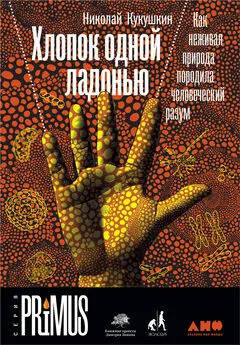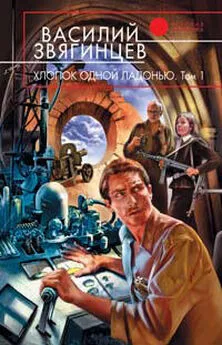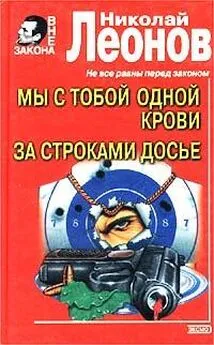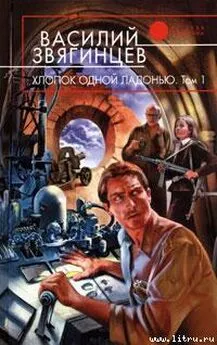Николай Кукушкин - Хлопок одной ладонью
- Название:Хлопок одной ладонью
- Автор:
- Жанр:
- Издательство:Альпина нон-фикшн
- Год:2020
- Город:Москва
- ISBN:978-5-0013-9315-3
- Рейтинг:
- Избранное:Добавить в избранное
-
Отзывы:
-
Ваша оценка:
Николай Кукушкин - Хлопок одной ладонью краткое содержание
Оказывается, в человеческом страдании виноваты динозавры, легкие существуют благодаря лишайникам, а главным событием в жизни наших предков за последний эон было превращение в червей. «Хлопок одной ладонью» – это история человека и его внутреннего мира, вмещающая в себя весь путь от неорганических молекул до возникновения языка и рассказанная так, будто это рыцарский роман или мифический эпос.
Хлопок одной ладонью - читать онлайн бесплатно ознакомительный отрывок
Интервал:
Закладка:
33. Engl, E. & Attwell, D. Non-signalling energy use in the brain. J Physiol 593, 3417–3429, doi:10.1113/jphysiol.2014.282517 (2015).
1. Dobzhansky, T., Spassky, B. & Tidwell, T. Genetics of natural populations. XXXII. Inbreeding and the mutational and balanced genetic loads in natural populations of Drosophila pseudoobscura. Genetics 48, 361 (1963).
2. Ralls, K., Ballou, J. D. & Templeton, A. Estimates of Lethal Equivalents and the Cost of Inbreeding in Mammals. Conservation Biology 2, 185–193 (1988).
3. Dobzhansky, T. Genetic Loads in Natural Populations. Science 126, 191–194 (1957).
4. Barrett, S. C. & Charlesworth, D. Effects of a change in the level of inbreeding on the genetic load. Nature 352, 522–524, doi:10.1038/352522a0 (1991).
5. Vesteg, M. & Krajčovič, J. On the Origin of Meiosis and Sex. Sull'Origine Della Meiosi e Della Sessualit. 100, 147–161 (2007).
6. Cavalier-Smith, T. Origins of the machinery of recombination and sex. Heredity (Edinb) 88, 125–141, doi:10.1038/sj.hdy.6800034 (2002).
7. Cleveland, L. R. The Origin and Evolution of Meiosis. Science 105, 287–289, doi:10.1126/science.105.2724.287 (1947).
8. Mable, B. K. & Otto, S. P. The evolution of life cycles with haploid and diploid phases. BioEssays 20, 453–462, doi:10.1002/(sici) 1521–1878 (199806) 20:6<453::Aid-bies3>3.0. Co;2-n (1998).
9. Bernstein, H., Byers, G. S. & Michod, R. E. Evolution of Sexual Reproduction: Importance of DNA Repair, Complementation, and Variation. The American Naturalist 117, 537–549, doi:10.1086/283734 (1981).
10. Wilkins, A. S. & Holliday, R. The evolution of meiosis from mitosis. Genetics 181, 3–12, doi:10.1534/genetics.108.099762 (2009).
11. Quinn, A. How is the gender of some reptiles determined by temperature? , < https://www.scientificamerican.com/article/experts-temperature-sex-determination-reptiles/> (2007).
12. Gilbert, S. F. & Barresi, M. J. F. Developmental biology (2016).
13. Lehtonen, J., Kokko, H. & Parker, G. A. What do isogamous organisms teach us about sex and the two sexes? Philos Trans R Soc Lond B Biol Sci 371, doi:10.1098/rstb.2015.0532 (2016).
14. Hopkins, K. Eunuchs in Politics in the Later Roman Empire. Proceedings of the Cambridge Philological Society 9, 62–80, doi:10.1017/S1750270500001408 (1963).
15. Tougher, S. & Boustan, R. a. S. Eunuchs in antiquity and beyond (Classical Press of Wales and Duckworth; David Brown Book [distributor in USA], 2002).
16. Walter, H. E. Biology of the Vertebrates: A Comparative Study of Man and His Animal Allies (Macmillan, 1928).
17. De Felici, M. in Oogenesis (eds Giovanni Coticchio, David F. Albertini, & Lucia De Santis) 19–37 (Springer London, 2013).
18. Fabian, D. F., T. The Evolution of Aging. Nature Education Knowledge 3 (2011).
19. Kirkwood, T. B. Evolution of ageing. Nature 270, 301–304, doi:10.1038/270301a0 (1977).
1. Simpson, A. G. & Roger, A. J. The real 'kingdoms' of eukaryotes. Curr Biol 14, R693–696, doi:10.1016/j.cub.2004.08.038 (2004).
2. Keeling, P. J. et al. The tree of eukaryotes. Trends Ecol Evol 20, 670–676, doi:10.1016/j.tree.2005.09.005 (2005).
3. Adl, S. M. et al. The new higher level classification of eukaryotes with emphasis on the taxonomy of protists. J Eukaryot Microbiol 52, 399–451, doi:10.1111/j.1550–7408.2005.00053.x (2005).
4. Stiller, J. W. et al. The evolution of photosynthesis in chromist algae through serial endosymbioses. Nat Commun 5, 5764, doi:10.1038/ncomms6764 (2014).
5. Bodyl, A., Mackiewicz, P. & Gagat, P. Organelle evolution: Paulinella breaks a paradigm. Curr Biol 22, R304–306, doi:10.1016/j.cub.2012.03.020 (2012).
6. Philippe, H. et al. Phylogenomics revives traditional views on deep animal relationships. Curr Biol 19, 706–712, doi:10.1016/j.cub.2009.02.052 (2009).
7. Nielsen, C. Six major steps in animal evolution: are we derived sponge larvae? Evol Dev 10, 241–257, doi:10.1111/j.1525-142X.2008.00231.x (2008).
8. Cavalier-Smith, T. Origin of animal multicellularity: precursors, causes, consequences-the choanoflagellate/sponge transition, neurogenesis and the Cambrian explosion. Philos Trans R Soc Lond B Biol Sci 372, doi:10.1098/rstb.2015.0476 (2017).
9. Fairclough, S. R., Dayel, M. J. & King, N. Multicellular development in a choanoflagellate. Curr Biol 20, R875–876, doi:10.1016/j.cub.2010.09.014 (2010).
10. Juliano, C. & Wessel, G. Developmental biology. Versatile germline genes. Science 329, 640–641, doi:10.1126/science.1194037 (2010).
11. Worheide, G. et al. Deep phylogeny and evolution of sponges (phylum Porifera). Adv Mar Biol 61, 1–78, doi:10.1016/B978-0-12-387787-1.00007–6 (2012).
12. Leininger, S. et al. Developmental gene expression provides clues to relationships between sponge and eumetazoan body plans. Nat Commun 5, 3905, doi:10.1038/ncomms4905 (2014).
13. Ereskovsky, A. V. et al. The Homoscleromorph sponge Oscarella lobularis, a promising sponge model in evolutionary and developmental biology: model sponge Oscarella lobularis. Bioessays 31, 89–97, doi:10.1002/bies.080058 (2009).
14. Sharp, K. H., Eam, B., Faulkner, D. J. & Haygood, M. G. Vertical transmission of diverse microbes in the tropical sponge Corticium sp. Appl Environ Microbiol 73, 622–629, doi:10.1128/AEM.01493–06 (2007).
15. Gilbert, S. F. & Barresi, M. J. F. Developmental biology (2016).
16. Collins, A. G. Phylogeny of Medusozoa and the evolution of cnidarian life cycles. Journal of Evolutionary Biology 15, 418–432, doi:10.1046/j.1420–9101.2002.00403.x (2002).
17. Telford, M. J., Budd, G. E. & Philippe, H. Phylogenomic Insights into Animal Evolution. Curr Biol 25, R876–887, doi:10.1016/j.cub.2015.07.060 (2015).
18. Finnerty, J. R. Cnidarians Reveal Intermediate Stages in the Evolution of Hox Clusters and Axial Complexity1. Integrative and Comparative Biology 41, 608–620, doi:10.1093/icb/41.3.608 (2015).
19. Adoutte, A. et al. The new animal phylogeny: reliability and implications. Proc Natl Acad Sci USA 97, 4453–4456, doi:10.1073/pnas.97.9.4453 (2000).
20. Seipel, K. & Schmid, V. Evolution of striated muscle: jellyfish and the origin of triploblasty. Dev Biol 282, 14–26, doi:10.1016/j.ydbio.2005.03.032 (2005).
21. Leclere, L. & Rottinger, E. Diversity of Cnidarian Muscles: Function, Anatomy, Development and Regeneration. Front Cell Dev Biol 4, 157, doi:10.3389/fcell.2016.00157 (2016).
22. Schippers, A. et al. Prokaryotic cells of the deep sub-seafloor biosphere identified as living bacteria. Nature 433, 861–864, doi:10.1038/nature03302 (2005).
23. Cavalier-Smith, T. Cell evolution and Earth history: stasis and revolution. Philos Trans R Soc Lond B Biol Sci 361, 969–1006, doi:10.1098/rstb.2006.1842 (2006).
24. Holland, P. W. Did homeobox gene duplications contribute to the Cambrian explosion? Zoological Lett 1, 1, doi:10.1186/s40851-014-0004-x (2015).
25. Mangano, M. G. & Buatois, L. A. Decoupling of body-plan diversification and ecological structuring during the Ediacaran-Cambrian transition: evolutionary and geobiological feedbacks. Proc Biol Sci 281, 20140038, doi:10.1098/rspb.2014.0038 (2014).
26. Zhang, X. & Cui, L. Oxygen requirements for the Cambrian explosion. Journal of Earth Science 27, 187–195, doi:10.1007/s12583-016-0690-8 (2016).
27. Mills, D. B. & Canfield, D. E. Oxygen and animal evolution: did a rise of atmospheric oxygen «trigger» the origin of animals? Bioessays 36, 1145–1155, doi:10.1002/bies.201400101 (2014).
28. Sperling, E. A. et al. Oxygen, ecology, and the Cambrian radiation of animals. Proc Natl Acad Sci USA 110, 13446–13451, doi:10.1073/pnas.1312778110 (2013).
29. Fox, D. What sparked the Cambrian explosion? Nature 530, 268–270, doi:10.1038/530268a (2016).
30. Deline, B. et al. Evolution of metazoan morphological disparity. Proc Natl Acad Sci USA 115, E8909 – E8918, doi:10.1073/pnas.1810575115 (2018).
1. King, H. Hippocrates' Woman: Reading the Female Body in Ancient Greece (Taylor & Francis, 2002).
2. Singer, C. The strange histories of some anatomical terms. Med Hist 3, 1–7, doi:10.1017/s0025727300024200 (1959).
3. Brown, G. W. Desert Biology: Special Topics on the Physical and Biological Aspects of Arid Regions (Elsevier Science, 2013).
4. Lutz, P. L. & Musick, J. A. The Biology of Sea Turtles (CRC Press, 2017).
5. Honegger, R., Edwards, D. & Axe, L. The earliest records of internally stratified cyanobacterial and algal lichens from the Lower Devonian of the Welsh Borderland. New Phytol 197, 264–275, doi:10.1111/nph.12009 (2013).
6. Heckman, D. S. et al. Molecular evidence for the early colonization of land by fungi and plants. Science 293, 1129–1133, doi:10.1126/science.1061457 (2001).
7. Hawksworth, D. L. The variety of fungal-algal symbioses, their evolutionary significance, and the nature of lichens. Botanical Journal of the Linnean Society 96, 3–20, doi:10.1111/j.1095–8339.1988.tb00623.x (2008).
8. Spribille, T. et al. Basidiomycete yeasts in the cortex of ascomycete macrolichens. Science 353, 488–492, doi:10.1126/science.aaf8287 (2016).
9. Sancho, L. G. et al. Lichens survive in space: results from the 2005 LICHENS experiment. Astrobiology 7, 443–454, doi:10.1089/ast.2006.0046 (2007).
10. Rundel, P. W. The ecological role of secondary lichen substances. Biochemical Systematics and Ecology 6, 157–170, doi: https://doi.org/10.1016/0305–1978 (78) 90002–9(1978).
11. Nash, T. H. Lichen Biology (Cambridge University Press, 1996).
12. Delwiche, C. F. & Cooper, E. D. The Evolutionary Origin of a Terrestrial Flora. Curr Biol 25, R899–910, doi:10.1016/j.cub.2015.08.029 (2015).
13. Kroken, S. B., Graham, L. E. & Cook, M. E. Occurrence and Evolutionary Significance of Resistant Cell Walls in Charophytes and Bryophytes. American Journal of Botany 83, 1241–1254, doi:10.2307/2446108 (1996).
14. Males, J. & Griffiths, H. Stomatal Biology of CAM Plants. Plant Physiol 174, 550–560, doi:10.1104/pp.17.00114 (2017).
15. Lewis, L. A. & McCourt, R. M. Green algae and the origin of land plants. Am J Bot 91, 1535–1556, doi:10.3732/ajb.91.10.1535 (2004).
16. Field, K. J., Pressel, S., Duckett, J. G., Rimington, W. R. & Bidartondo, M. I. Symbiotic options for the conquest of land. Trends Ecol Evol 30, 477–486, doi:10.1016/j.tree.2015.05.007 (2015).
17. Brundrett, M. in Advances in Ecological Research Vol. 21 (eds M. Begon, A. H. Fitter, & A. Macfadyen) 171–313 (Academic Press, 1991).
18. Brundrett, M. C. Coevolution of roots and mycorrhizas of land plants. New Phytologist 154, 275–304, doi:10.1046/j.1469–8137.2002.00397.x (2002).
Читать дальшеИнтервал:
Закладка:



![Василий Звягинцев - Хлопок одной ладонью. Том 1. Игра на железной флейте без дырочек [OCR]](/books/213154/vasilij-zvyagincev-hlopok-odnoj-ladonyu-tom-1-igr.webp)
![Василий Звягинцев - Хлопок одной ладонью. Том 2. Битва при Рагнаради [OCR]](/books/213155/vasilij-zvyagincev-hlopok-odnoj-ladonyu-tom-2-bit.webp)




